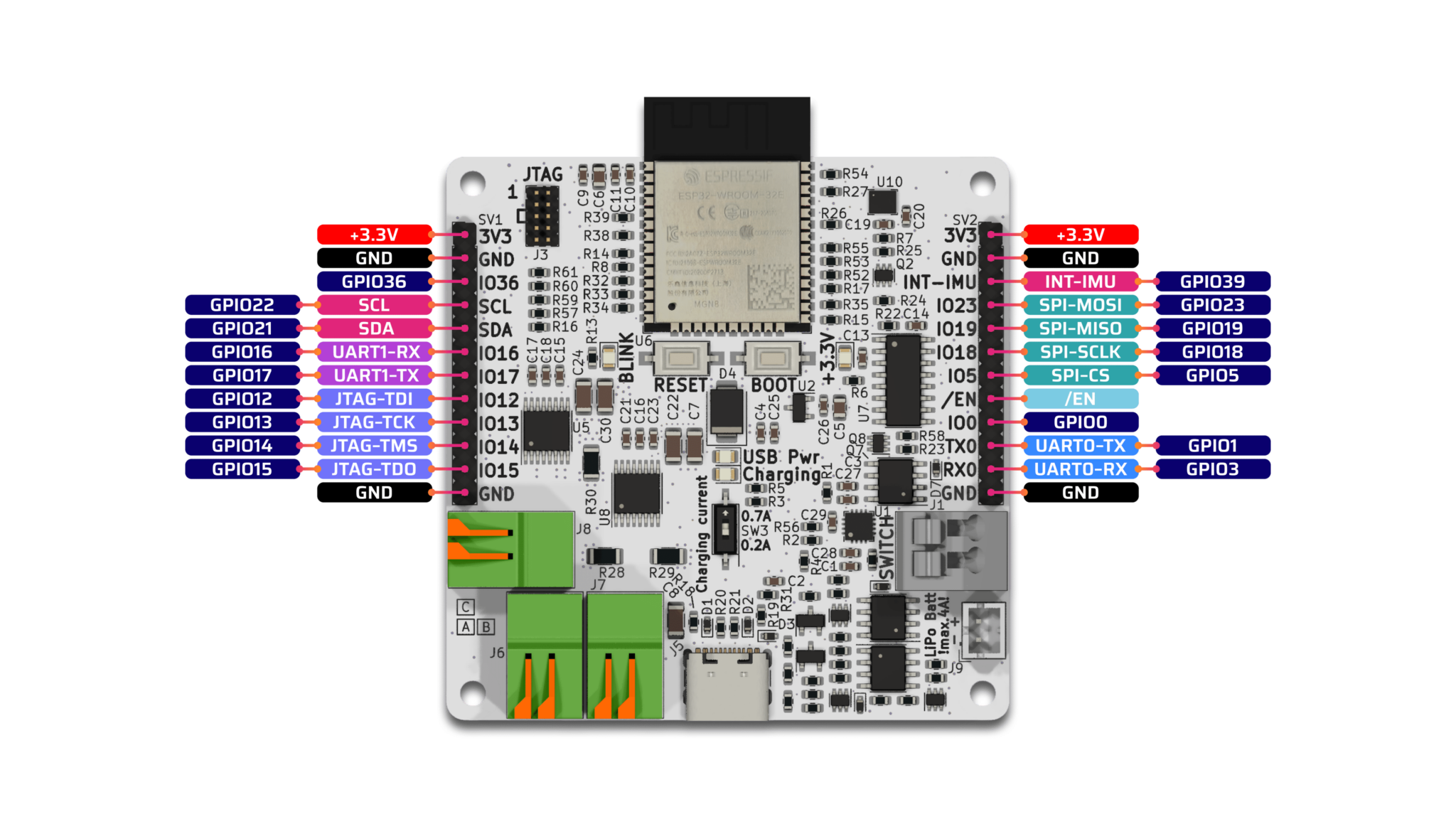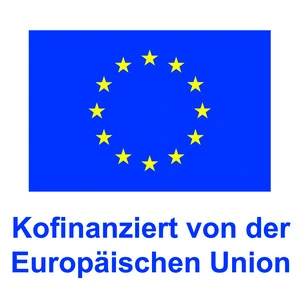UART
Quote from admin on August 15, 2024, 1:51 pm
The UART (Universal Asynchronous Receiver-Transmitter) is a serial communication interface that can be used on the RoboHeart Hercules to communicate with other devices such as computers, microcontrollers and sensors. You can see on the pinout in Figure 3 the pins IO16 and IO17, which are marked RX1 and TX1 on the back.
Please note: As these pins are intended for the UART, the corresponding lines on the RoboHeart have serial protective resistors.
To establish UART communication between the RoboHeart Hercules and another device, connect the TXD1 and RXD1 pins of the RoboHeart to the corresponding RXD and TXD pins of the other device.
RoboHeart <-> external board
TXD1 <-> RX
RXD1 <-> TX
GND <-> GND
You can also use the TXD0 and RXD0 pins for UART communication as well as all other digital pins of the ESP32 if you configure them accordingly in your Arduino sketch. Note, however, that not all lines on the RoboHeart have serial protective resistors.

The UART (Universal Asynchronous Receiver-Transmitter) is a serial communication interface that can be used on the RoboHeart Hercules to communicate with other devices such as computers, microcontrollers and sensors. You can see on the pinout in Figure 3 the pins IO16 and IO17, which are marked RX1 and TX1 on the back.
Please note: As these pins are intended for the UART, the corresponding lines on the RoboHeart have serial protective resistors.
To establish UART communication between the RoboHeart Hercules and another device, connect the TXD1 and RXD1 pins of the RoboHeart to the corresponding RXD and TXD pins of the other device.
RoboHeart <-> external board
TXD1 <-> RX
RXD1 <-> TX
GND <-> GND
You can also use the TXD0 and RXD0 pins for UART communication as well as all other digital pins of the ESP32 if you configure them accordingly in your Arduino sketch. Note, however, that not all lines on the RoboHeart have serial protective resistors.
CONTACT
Augmented Robotics GmbH Bismarckstraße 10 – 12 10625 Berlin Germany
+49 (0)30 590-083296

This project is co-financed by the European Regional Development Fund [ERDF]
